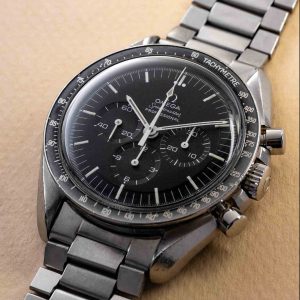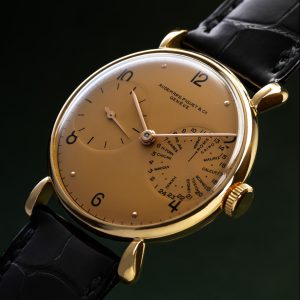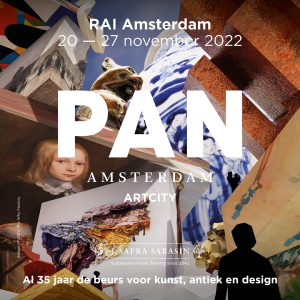A clockwork running on air

‘Atmos, the most iconic clockwork, running on air’. A clock which could run indefinitely without winding the movement, read the whole story.

By AWCo on 24 June 2019
It was the simple implementation of these watches that were fitted with a metal fence over the glass so that the fragile glass could not break, this type of gear was produced for the officers in the trench war. Small wired lugs were soldered onto these simple small pocket watches and were equipped with a leather strap so the pocket watch could be worn around the wrist. Time became an important instrument and with your hands full of weapons, using a pocket watch was not practical at all. These Trench watches were produced by Omega and Longines among other brands. Often the name of the manufacturer was not put on the white enamel dial.
'Antoine LeCoultre was capable to deliver parts for the perfect movement.'
Jean-Leon Reutter took on the challenge to create a clock which could run indefinitely without winding the movement. By using an existing technique in which the pendulum was replaced by a slowly turning cylinder, the winding force could discharge more slowly than using a normal pendulum. Next to this Jean-Leon Reutter searched for a movement in which every resistance was decreased. He came in contact with watchmaker and fellow citizen Edmond Jaeger who was friends with Jacques-David LeCoultre, the grandson of Antoine LeCoultre, the inventor of the ‘Millionmetre’.

"They named it the Atmos clock."
Antoine LeCoultre was capable to deliver parts for the ‘perfect’ movement. The only thing to do was to create a continuously winding of the spring. Jean-Leon, being a Radiologist Engineer, was familiar with creating glass filled with chemicals. He made and used a U-shaped tube similar to that of a thermometer filled with 50% mercury and encased it all inside a metal cylinder, which is known as the ‘Bellows’. One part of the tube was isolated with ‘down feather’ and that the other part was exposed to the daily change of temperature. This change of temperature resulted in the mercury going from one side to the other which created a kind of movement. This movement was used to wind the spring in the LeCoultre clockwork. A very genius plan which resulted in the summer of 1928 in four prototypes. With pride, Jean-Leon presented his findings and his prototypes to both Jaeger and LeCoultre. By using the atmosphere, as explained, they named the clock Atmos clock.

The three gentlemen started working together and the company Jaeger-LeCoultre had the exclusive rights in making and selling the Atmos clock. The ‘winding system’ by using the glass tube, turned out to be fragile and a bit unreliable. But more important, it only worked with relatively large changes in temperature. Therefore another solution was necessary. They created a metal cylinder which was vacuumed and filled with gas (Ethyl Chloride). The movement not only was created by changes in temperature but also by changes in air pressure. A capsule inside the cylinder could expanse and contract, like an accordion. Thus creating the necessary movement in winding the spring. This construction could be placed where the glass tube was placed, so there was no need to rebuild the clockwork. A small temperature change of one degree is sufficient for two days operation. This marvelous improvement stands for the innovation of the brand and was introduced to the public around 1938.
Nowadays Jaeger LeCoultre still offers some beautiful Atmos clockworks. Over the last ten years, Jaeger-LeCoultre worked together with Marc Newson, the famous designer of, for example, the first iPhone. The Limited model 568 came from his hand and is beautifully made from Baccarat crystal glass. Another astonishing Atmos clockwork is the Marqueterie. This really is a piece of art. The glass casing of the Atmos clock is built inside a so-called ‘cabinet’. By pushing a button the cabinet opens and shows the Atmos clock. Where it is almost impossible to create an extra complication, Jaeger-LeCoultre managed to create a moon phase complication by using the function of the slowly turning ‘groundwheel’. A magnificent and technical creation.

We, as Amsterdam Watch Company, are proud to offer three different original Atmos Reutter clockworks all produced in the 1930s. All of these clocks have a fascinating history and design. The movements have been serviced and are all in good condition.
Nowadays Jaeger LeCoultre still offers some beautiful Atmos clockworks. Over the last ten years, Jaeger-LeCoultre worked together with Marc Newson, the famous designer of, for example, the first iPhone. The Limited model 568 came from his hand and is beautifully made from Baccarat crystal glass. Another astonishing Atmos clockwork is the Marqueterie. This really is a piece of art. The glass casing of the Atmos clock is built inside a so-called ‘cabinet’. By pushing a button the cabinet opens and shows the Atmos clock. Where it is almost impossible to create an extra complication, Jaeger-LeCoultre managed to create a moon phase complication by using the function of the slowly turning ‘ground wheel’. A magnificent and technical creation.
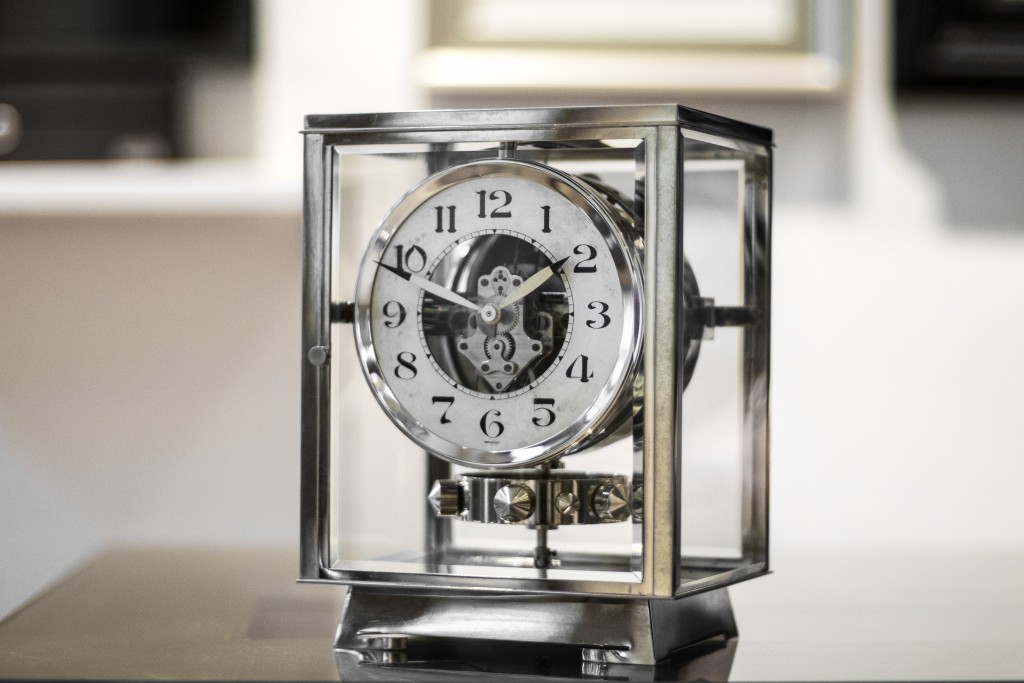
Reutter, numbered 1455, ca. 1931
This Atmos clock is an original Reutter Atmos because it has the first winding system designed by Jean-Leon Reutter. The design of the clock is very Art-deco. The case is made of chrome with beautiful cut glass panels. You can see a part of the movement through the dial which is not that common. The dial furthermore has Arabic numerals and large hands with black tips.
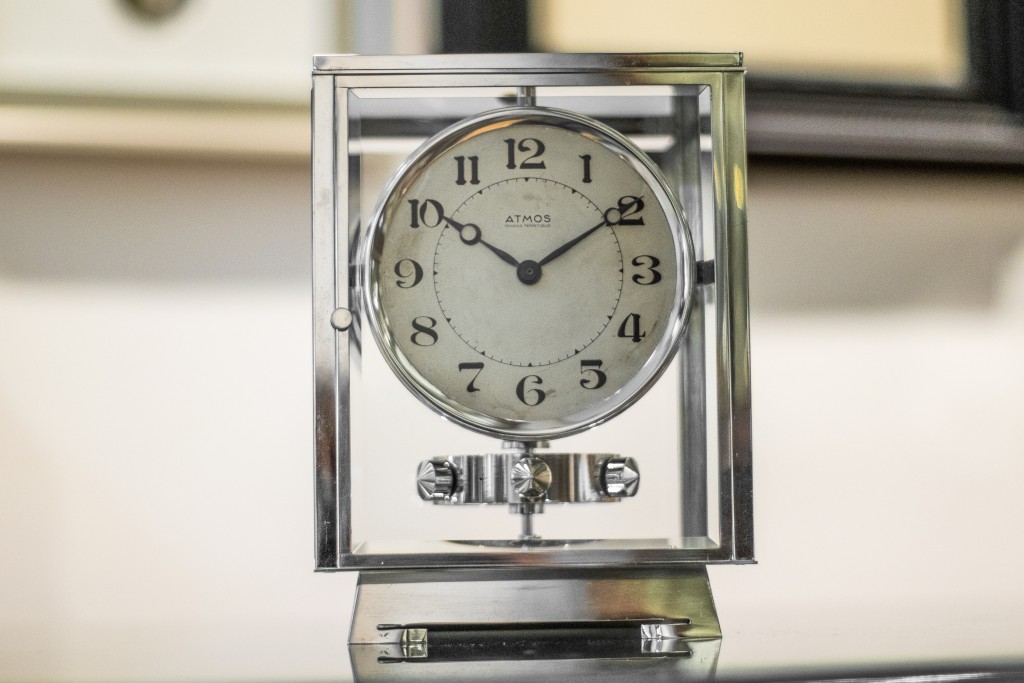
Reutter, numbered 4408, ca. 1933
Also an original Reutter clock. With a very clean design and nicely cut glass panels. The dial has Arabic numerals and stylish hands.
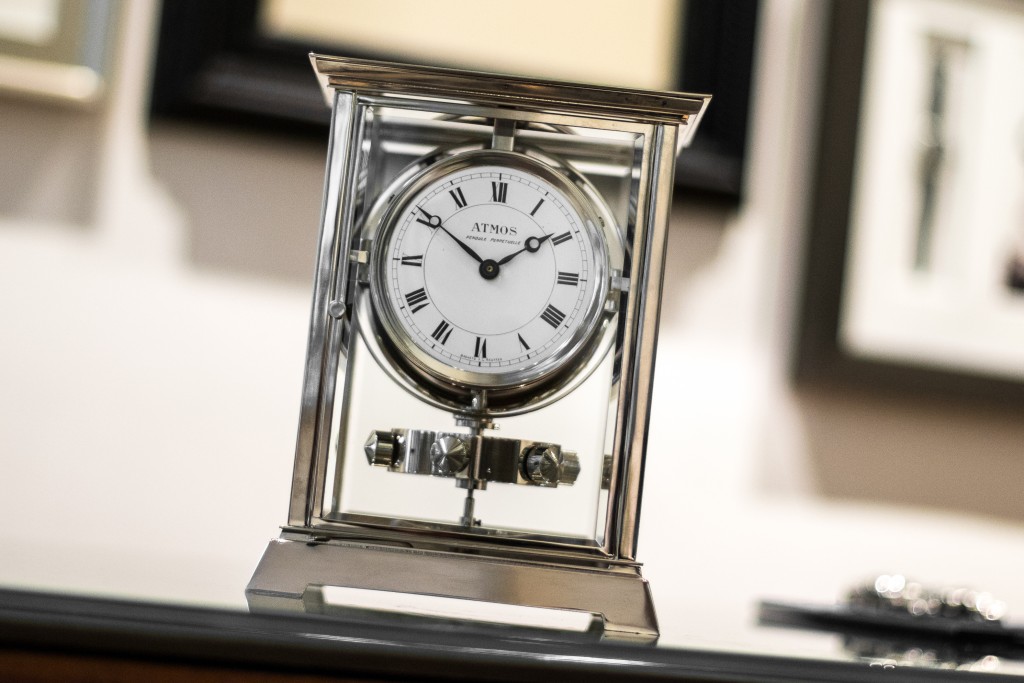
Reutter, numbered 6094, ca. 1935
This original Atmos Reutter clock has a beautiful white dial with Roman numerals and elegant hands. The case is also made of chrome with beautiful cut glass panels.


